Smashing White Supremacy, Building for Black Freedom
We must focus the fight on visible and invisible forces. Until real change comes, no one gets to "just enjoy the game."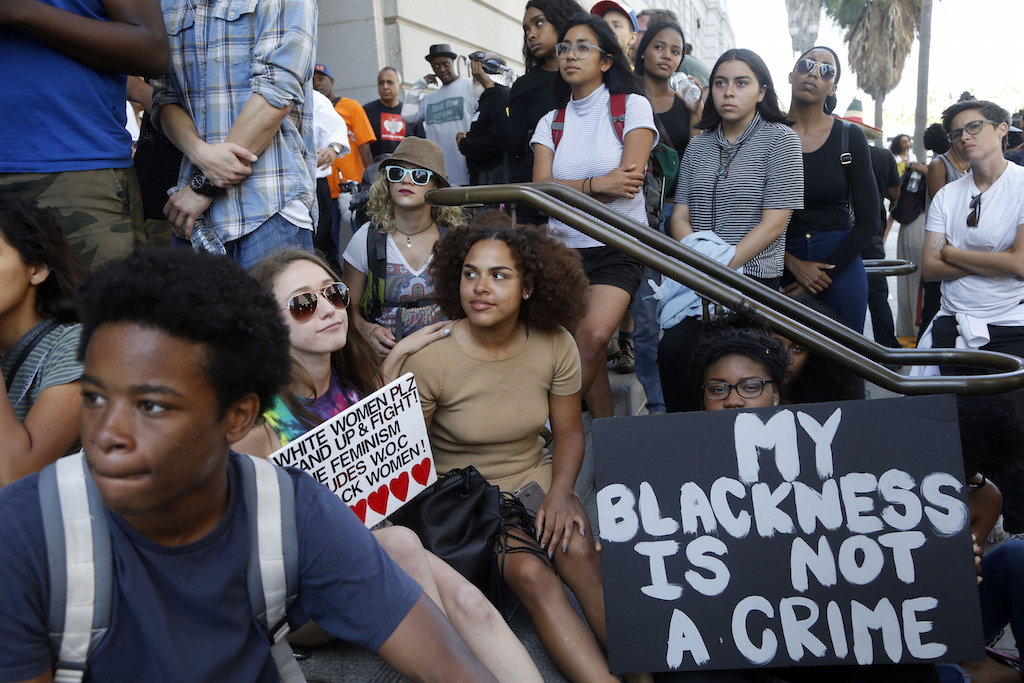 People outside City Hall in Los Angeles in 2016 protest a fatal shooting by police. (Nick Ut / AP)
People outside City Hall in Los Angeles in 2016 protest a fatal shooting by police. (Nick Ut / AP)
We have come over a way that with tears have been watered,
We have come, treading our path through the blood of the slaughtered;
Out of a gloomy past, till now we stand at last
Where the white gleam of our bright star is cast.
The words of the black national anthem, written by James Weldon Johnson in 1900, filled the circle and the souls of the hundreds who gathered Oct. 1 in front of the StubHub Center sports complex in Carson, Calif., a Los Angeles suburb. As green Philadelphia Eagles jerseys and fewer blue Los Angeles Chargers jerseys made their way past red Colin Kaepernick shirts, some people brushed our shoulders with a force that indicated intentionality. Others sneered. And still others screamed with angry faces, “All lives!”
My eyes lingered on the brown-skinned brother anxiously intertwining his fingers with hers, diverting his eyes, as he guided his white partner around the crowd of mostly black people. As we closed the third verse of the song, I hurried up the walkway, flyer in hand, smiling warmly as I reached out. He cast his eyes downward until he could no longer ignore my voice, and he finally responded, “I’m just trying to enjoy the game.”
We were not blocking intersections. We didn’t come to “shut it down.” We were there to exercise self-determination by singing the black national anthem, to refocus the message, to remind folks why Kaepernick took a knee, to lift up the names of those whose bodies have been stolen by police violence and to push for accountability. We encouraged people to sign an online petition for Los Angeles County District Attorney Jackie Lacey to prosecute the police who kill community residents. This was operation “hearts and minds,” an effort to win folks over to our side, but we underestimated the football-fan-to-jerk ratio.
In following after the brother, I was hoping to gain a reprieve from what vacillated between snide remarks and out-and-out threats of bodily harm. But he wouldn’t even take the black and yellow flyer from me. Instead, he tightened his grasp on his companion’s hand, tilted his hips forward and quickened his way toward the stadium, as I called behind him, “What about your people? They’re killing your people. It only takes 30 seconds to sign the petition, brother.”
Just 10 short months ago, kneeling in protest to the white national anthem, unapologetic blackness, raised fists, unruly afros, defiantly colored braids and hope that danced in the eyes of shiny brown children were becoming the norm. Players knelt in solidarity with Kaepernick’s sideline protests, stepping into what it means to be a “field Negro,” in the Malcolm X sense of the term.
Actor Lupita Nyongo was seen not only for her immense talent, but also for all of her dark beauty, affirming the value of other black-skinned girls.
Actor/activist Jesse Williams flipped off the white supremacist Hollywood establishment in one of the most epic speeches of all time.
Natural hair care products took up entire aisles at Target, as black women shunned relaxers and press-and-curls.
“Alright” and “Don’t Touch My Hair” wafted through the air as brown bodies swayed and bounced to new anthems.
An honest laughter, one that emerged from the bellies of black folks, began to fill spaces, edging out false smiles that “hide our cheeks and shade our eyes.”
Eight years of President Barack Obama did little for black people in terms of policy. Some would argue that Obama actually set us back—bailing out banks, cutting public programs, deporting undocumented people, feeding the prison-industrial complex and waging wars against black and brown people globally. But for the collective souls of black people, for our spirits and for our hearts, his impact (and that of Michelle, Malia and Sasha) was transformational.
It is not accidental that Black Lives Matter was born under Obama’s presidency, and this is not to give him credit for the movement by any stretch. However, the reclamation of the black liberation struggle that manifests itself most clearly through Black Lives Matter might be attributed to the growing sense of power and audacity concomitant with the weakening of the boot on our necks.
Just as we were stepping into our own power, just as the voices of our ancestors became more than unheard whispers, just as we began to see and embrace each other for the fullness of who we are, just as our souls were opening, our power was manifesting and freedom was in sight, the starkest, most extreme, most oppressive force imaginable came into power: the Trump regime. As our ancestors spoke to and through us—guiding our way along freedom’s path—unabashed white power returned with a vengeance. We must not make light of white men who dress in khakis, carry torches and chant Nazi slogans. We must not bury our heads when white teens attempt to lynch 8-year-old black boys in New Hampshire, when police officers tell white motorists, “Don’t worry, we only kill black people” in Georgia, or when they rev cars into crowds in Virginia—murdering those who seek to inherit the legacy of abolitionist John Brown.
The Trump regime is terrorizing communities of color, women, poor people, queer folks, trans folks and virtually every non-white-wealthy-straight-cis-gendered-able-bodied-so-called-Christian man. During this moment of raging white-supremacist-patriarchal-heteronormative capitalism—when Latino, black and Asian immigrants are rounded up and deported, with no regard for families or U.S. ties; when police departments are provided military equipment; when the War on Black People, thinly veiled as a “War on Drugs” is renewed; when U.S. citizens in Puerto Rico, who are struggling to survive and recover in the wake of Hurricane Maria, are blamed for throwing the budget “out of whack” as the president tosses out paper towel rolls to crowds like T-shirts at a basketball game; when laws are pushed that permit enraged (white) motorists to run over protesters; and when “black identity extremists” are named as a new FBI target—we must contemplate how to not only #Resist, but also how to build for freedom.
In 1967, Kwame Ture and Charles Hamilton’s seminal work “Black Power” asserted that black people in America were living in a colonized state and that racism in individual, institutional and internalized forms fed colonial powers. Fifty years later, we are reeling as the overt individual (and group) form of white supremacy re-emerges from the closets into which it had been forced.
Black folks, more than any other group, never lost sight of violent hatred seething beneath the surface. Oftentimes, we were told that we were paranoid in our claims. Liberal whites, older ones who “marched with Dr. King” and younger ones who invite us to be the black friend at the dinner table, attempted to reassure us and cause us to question our own knowingness as our blood boiled over micro-aggressions that signaled the ever-presence of old-school white supremacy. We knew that the woman who clutched her purse in the elevator, the white student who questioned the credentials of black professors, the cashier who asked for identification with the credit card and the teacher who called black children’s questions “disruptive,” presented evidence that we were not “color-blind” or “post-race.”
But this liberal brand of white folks feigned shock at the presence of neo-Nazis in their midst. And as black bodies were beaten in Charlottesville and white ally Heather Heyer was murdered, the yoga-pant wearing, latte-drinking, dog-loving, gentrifying white liberals made themselves feel better by taking to Facebook and gathering in parks chanting “Love trumps hate.” They put bumper stickers on their cars, clipped safety pins to their jackets and changed their social media profile pictures.
Then they made assertions about what white supremacy looks like. If you carried a Tiki torch in Charlottesville, you were definitely a white supremacist. If you follow Richard Spencer or claim to be a member of the “alt-right”: white supremacist. Steve Bannon and Sebastian Gorka: 90 percent white supremacists (Gorka was actually linked to the Nazis, right?). Trump: white supremacist ties, but better now that he fired Bannon and Gorka. Orrin Hatch, Paul Ryan and Mitch McConnell: reasonable Republicans, not white supremacists. Hillary Clinton: missed the mark on that one. Why didn’t black people vote for her in the same numbers as they did for Obama? And leaders like Chuck Schumer and Nancy Pelosi are dubbed “the resistance” by cable news host Lawrence O’Donnell.
In a sense, what Charlottesville has done is create images of white supremacy that are so stark they make acceptable those who quietly advance institutional oppression: liberal white supremacists.
This moment is the bursting open of the racial wound. Blood and pus pour out, and liberals attempt to cover it, to soothe it with assurances that “diversity and inclusion” are the norm, as team owners #TakeAKnee to demonstrate “unity,” while being unable to recite a single name of the 1,093 people killed by police in the United States in 2016 and virtually banning quarterback Kaepernick from the NFL.
Our wounds are born not only from direct strikes that lacerate bodies and spirits through blatant acts of white supremacy. They also are the result of constant poking, scratching and grating of liberal racism, which builds and feeds institutions that benefit from black oppression.
It is the liberal brand of white supremacy that allows politicians to give cultural nods while passing policies that decimate black communities. In the liberal bastion of Los Angeles, Mayor Eric Garcetti is floating his own name as a possible candidate for the U.S. presidency, believing that his stint in the Peace Corps, fluent Spanish, hipster wardrobe and photo ops with black male opportunist “leaders” outweighs the fact that 54 percent of the city’s general fund goes to the most murderous police department in the nation, that Los Angeles has the largest unhoused population in the country (which is upward of 40 percent black), and that he refuses to make Los Angeles a “sanctuary city,” let alone a “freedom city.” Liberal white supremacy is responsible for gentrification in Oakland, San Francisco, Harlem, Chicago, Washington, D.C., and virtually every other major city.
Liberal white supremacy uses an overtaxed working class to fund billion-dollar jail expansions. It defunds the bus systems accessible to poor folks in favor of the rail systems that allow white professionals to be whisked underground from their bedroom communities to capitalist epicenters without ever seeing black and brown poverty.
The spectacle of extremist white supremacy warrants address. However, it must not be used to divert attention away from the more pervasive liberal form. The two are intertwined. As we embrace the motto of “resistance,” we must not limit our fight to the forces that are most visible. We also must apply our resistance to those structures that are less apparent. Our resistance must apply to every gradation of white supremacy.
Moreover, we must both resist and implement a vision. This means having the courage to advocate for real universal health care, rather than simply clinging to Obamacare. It means investing resources into free, quality education from preschool to the university level, rather than simply pushing back against Betsy DeVos’ privatization agenda. It means a holistic reimaging of public safety, rather than limiting discussions to police reform.
To simply #Resist extremist white supremacy or even the Trump administration is to limit our work. What we must seek in this liberation struggle is not a retreat from extremism to liberalism. Gentler words don’t fix black unemployment. Feel-good moments don’t dismantle the school-to-prison pipeline, and false displays of “unity” don’t remove the targets from the backs of black folks. Lesser gradations of white supremacy are often presented as our only options. But there is another option—real, complete and total freedom.
Just blocks away from StubHub Center, Nephi Arreguin was killed by Los Angeles County sheriff deputies while he was sitting in his car. His son was born only a few months later and is being raised without his father. Michelle Shirley was killed by Torrance police a few exits away for “driving erratically,” leaving her son without his mother. Police killed Wakiesha Wilson, Kenny Watkins, Carnell Snell and dozens of others within a stone’s throw from the stadium. In less than five years, police have killed nearly 300 Los Angeles County residents, and not a single officer has been prosecuted in those deaths.
Extremist white supremacists chant “Blue lives” or “All lives,” while liberal forms stroll casually by demonstrators, defend police chiefs who command murderous departments and celebrate “diversity” because the district attorney who refuses to charge officers who kill residents “happens to be” a black woman.
This moment requires that we #Resist white supremacy in all its forms and that we do the much harder work of building for black freedom. Until real freedom comes, no one gets to “just enjoy the game.”
Your support is crucial…With an uncertain future and a new administration casting doubt on press freedoms, the danger is clear: The truth is at risk.
Now is the time to give. Your tax-deductible support allows us to dig deeper, delivering fearless investigative reporting and analysis that exposes what’s really happening — without compromise.
Stand with our courageous journalists. Donate today to protect a free press, uphold democracy and unearth untold stories.
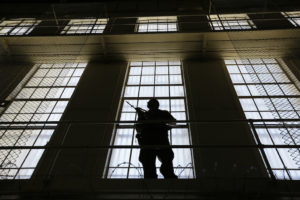
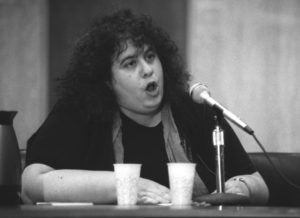
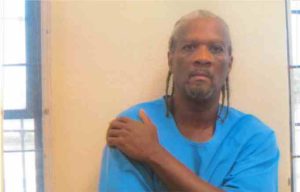
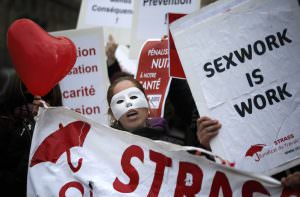
You need to be a supporter to comment.
There are currently no responses to this article.
Be the first to respond.